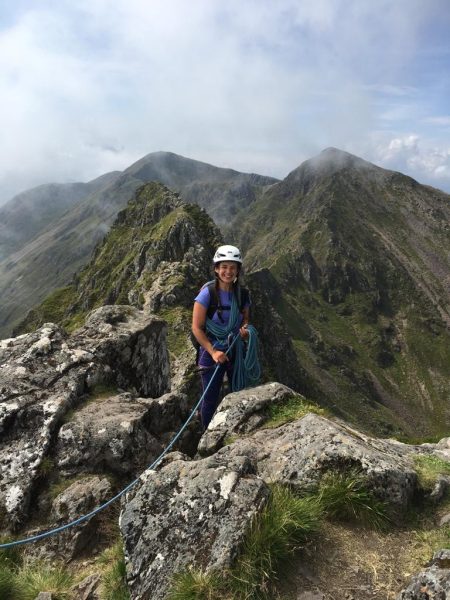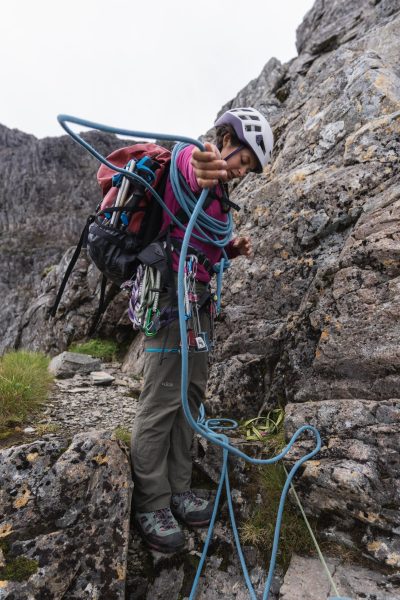60 Seconds Read: Becoming an Instructor
Kirsty Pallas is an outdoor instructor and Mountain Rescue member from Oban. This year Kirsty successfully passed her Mountaineering and Climbing Instructor assessment. We catch up with Kirsty here to find out more about her journey to becoming qualified and what advice she might have for other women considering the same journey.
.

Photo Credit Julie Watson
.
Tell us a bit about how you became active in the outdoors and how you started climbing?
My parents always took me out walking when I was a kid, every weekend we’d be going somewhere! I did my first Munro aged 9 but it wasn’t until I was 18 that I started climbing. I was an outdoor education apprentice and the senior instructor introduced me to summer and winter mountaineering, and I was just hooked from then!
Who were your biggest influences?
I’ve always been inspired by female guides and WMCIs, so people like Libby Peter, Sam Leary and Lou Reynolds were who I looked up to most, and hoped to follow in their footsteps! I also love seeing women climbing adventurous trad, even if the grades aren’t super hard, and I’m lucky enough to have found a great group of people doing this, that I can plan trips with.
What inspired you to take your hobby and turn it into a qualification?
I actually decided I wanted to be an WMCI at 17, before I’d done much mountaineering or had even rock climbed! It just seemed like the best job in the world, and I set myself a timeline to do it in. I’m so thankful I found this though, I’m not sure what else I’d be doing otherwise!
What is the biggest change you think that could be made to encourage more women to see the potential of a career in the outdoors?
I think we need more visible role models that are working and having a great time, more athletes that are sponsored by brands, and more real people used in media campaigns. I also think that pushing mentorship schemes and being honest about the qualifications would help. I had such a built up idea of both WML and MCI in my head from people’s stories, and while they weren’t easy, they didn’t feel as hard or as scary as had been made out. These awards have nothing to do with how hard you climb or how fast you can go or how much you can carry, it’s about being comfortable in those environments, and having the capacity to be enthusiastic while it’s raining or blowing a hoolie!
Do you think you have ever faced barriers in the outdoors as a result of being female?
Absolutely! I’m only 5 foot tall, and I really struggle to get suitable technical clothing to fit me and work properly. It’s really hard to find winter hardshell trousers that don’t have loads of extra fabric round the ankles to catch on crampons, and I always have extra fingertip on my winter gloves, which makes knot tying a bit trickier! And I know I’m not alone in this either. While I’ve not experienced any blatant sexism, the language in the outdoors is very male dominated and can be off putting to some women. I think because I have been so set on achieving the WMCI, I’ve not let anyone’s expectations get in the way, and generally have the attitude that I’ll show people how capable I am if first impressions don’t work!
If you could give your younger self any advice, what would it be?
Try not to get caught up in comparing yourself with others, whether that’s the grade you climb, or the time it’s taken to work through a qualification. Everyone works at different paces, and you’ll get there when you need to! Sometimes taking longer will turn you into a better instructor in the long run. Also be proud to be a woman in the outdoors, and don’t be afraid to shout about it! We need more visibility and you can make that happen.
.

Photo Credit Adam Raja Campbell